How Formula 1 uses AI (& why it matters to you).
Formula 1 runs on AI. So should you.
Formula 1 & AWS invited to me the Imola Grand Prix in Italy.
I had two goals there:
How Formula 1 is using AI?
Does it (really) matter to us?
I couldn’t believe both answers.
So I made a blog to process it.
How Formula 1 does AI?
AI makes split-second decisions that determine F1 race winners.
F1 teams run 8 billion scenarios.
Per weekend.
That's more computational power than NASA's entire Apollo program to go to the moon in 1969.
It’s called ‘digital twins’.
These are complete virtual clones of each car running billions of simulated laps. Teams know how parts will perform months before manufacturing.
This is before the track. But it also happens during the track.
Teams have an AI Strategic Agent to take decisions.
AI agents race each other millions of times, learning through trial and error. They anticipate competitor moves like chess computers calculating 20 moves ahead.
It behaves like an overpowered team of strategists having access to every data.
But this AI only gets ‘fed’ 6% of the total data they collect…
F1 teams load cars with 600 sensors during practice to perfect performance. They track engine heat, tire wear, airflow, and driver inputs - 100 GB per lap.
These heavy sensors get removed for races to make cars faster. But the crucial data hits a bottleneck. Here's the problem ↓
F1 rules limit teams to sending only 60 MB of data per second from car to pit.
That's just 6% of what they collect. AI decides which information is most important to transmit.
This data battle determines race winners.
Takeaway: Be selective. Feed your AI only with the needed data.I thought all of these sensors were limited to the car… and I was wrong.
While at the 2025 Formula 1 AWS Emilia-Romagna Grand Prix, I talked to Antonio Giovinazzi, Scuderia Ferrari HP Reserve Driver.
He explained that drivers now wear sensors tracking heart rate and body temperature.
When signs of fatigue appear, AI recommends cooling or engine adjustments. The car adapts to the driver's physical condition.
Kids aged 10 are already training for the future of Formula 1 (powered with AI). The sport is becoming the embodiment of human + machine (AI).
I could go on for hours on how Formula 1 is embracing AI.
But I know what you think: “Why should I care? It’s just cars.”
It’s not. It’s the future of YOUR technology.
Why it matters to you.
Boeing now uses F1's digital twin approach for aircraft development.
UPS improved delivery routes using race strategy algorithms.
Hospitals reorganized surgery teams based on F1 pit stops.
F1 technology is everywhere. It just happens before.
If F1 is optimizing for data, AI agents & the right infrastructure to take blazing-fast decisions… we will too. It’s just a matter of when.
I asked Charles Leclerc how important is data, really.
Funny enough, he’s about my age.
“What part of driving is data? What part is instinct?” I asked, thinking he would answer that obviously, it’s all instinct & talent.
His answer: “I don’t do anything without data.”
I was shocked.
I couldn’t believe enough data could make him budge in the middle of steering a 375 km/h car. He said, “Well, it’s a million data per second, per car.”
I realized most people don’t think this way.
For example, I’m constantly asked strategic questions:
“Ruben, what tools should I use for X?”
“Ruben, how do you start on Linkedin?”
“Ruben, who’s the best to follow to learn X?”
People crave for better decisions.
Better decisions come from data, processed for your specific case studies.
So I instantly ask:
Start by formulating the problem first. What’s at stake?
Did you prompt ChatGPT Deep Research for it?
Have you tried asking Perplexity?
But people skip data collecting (= context).
And if you ask the wrong thing, you will get the wrong AI results.
AI is as good as your ask.
→ Get better at collecting the right data.
→ Get better at feeding the right data to AI.
Even elite athletes like Leclerc never dare to take a decision “without data”.
Speaking of data & simulation: I had the chance to try their race track simulation.
And you can too.
Go to https://realtimeracetrack.com/. Powered by AWS, the invisible infrastructure behind every AI moves from F1. Impressive tool, really.
You design your own track.
An AI appears & talks as your strategist.
She goes through the track & how to approach it.
You drive it. And I don’t even have a driving license (lol).
Bonus: you crash into the walls at 375 km/h. Sorry, mom.
You get to feel the AI difference in F1.
But… why should you care about AI in F1?
Because you already live in a mini Grand Prix:
Your inbox ≈ the car’s 600 sensors.
Hundreds of pings, newsletters, and Slack DMs every day. Like an F1 strategist, you need to decide which 6 % of that noise is worth acting on. AI filters can be your race engineer.Digital twins = “draft mode” in ChatGPT.
Ferrari simulates millions of laps before touching asphalt. You can simulate a marketing email, a LinkedIn post, or tomorrow’s sales pitch with a prompt and hit “Regenerate” until it feels pole-position ready.Strategy agents = prompt libraries.
Teams pit the best AIs against each other to choose tyre strategy; you can pit a “customer-persona” GPT against a “copy-editor” GPT and watch them argue until your message is clearer—and faster.Pit stops = micro-iterations.
Ferrari swaps four tyres in 2 seconds; you can iterate on a proposal in 2 minutes. Same philosophy: shorten the feedback loop, win more races.
Think of Formula 1 as the world’s fastest R‑and‑D lab.
What rolls out of the garage on Sunday morning rolls into your phone, your hospital, your commute and, even more quietly, your daily decision‑making:
Selective data beats big data.
F1 cars collect 100 GB per lap, but only the smartest 6 % gets streamed to the pit wall. When you ask ChatGPT, don’t dump everything you know. Summarise the essentials; give the model just what it needs to win your “race.”
Simulation first, action second.
Teams run billions of virtual laps before turning a wheel. Quickly iterating in the safety of a prompt costs nothing and can save you a blown engine, or a blown budget, later.Human + machine > human OR machine.
Charles Leclerc’s instincts are razor‑sharp, but he still refuses to turn in without the data. Use AI as your strategist, not your replacement: let it surface patterns while you provide the context & taste it can’t.Today’s tech trickles down fast.
Digital‑twin maths that shaved 0.1 seconds at Grand Prix now plans city bus routes and helps your phone camera predict the perfect shot. If you wait for AI to feel “mainstream,” you’ll already be starting from the back of the grid.
Your next lap.
Define the finish line.
Write one clear sentence about the decision, idea or project you’re working on. For eg. “I want to gather better ideas for blogs.”Feed the right fuel.
Gather a handful of relevant facts, constraints or examples—nothing more. For eg. “Here are blogs I already love.”Run a simulation in ChatGPT.
Prompt: “Act as my blog strategist. Given X goal, Y constraints and Z context, what are three moves to gain an advantage?”Test, tweak, repeat.
Just like practice sessions, each prompt is data. Adjust and re‑run until the answer feels pole‑position ready.
Start treating each prompt like a mini qualifying lap, and you’ll build a compounding edge long before the rest of the grid hears the lights go out.
The takeaway is simple: If twenty drivers trust AI at 375 km/h, you can trust it at 3 km/h on your morning coffee run.
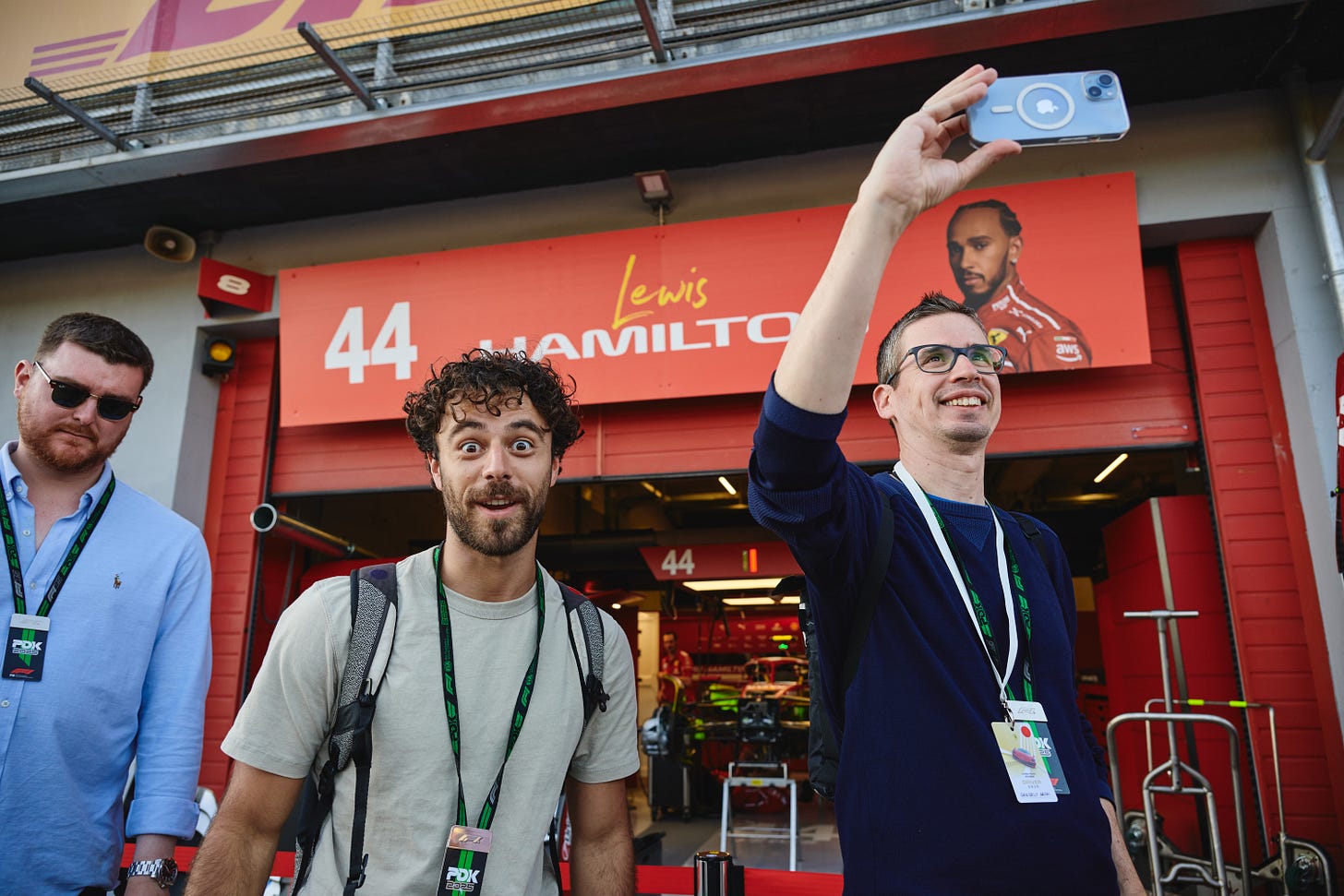
Side note. I made a doc with my weekly favorite posts: https://docs.google.com/document/d/1iEMIp885lTw2ZvAR9en4jwOT2XHg3BRcxohkzB8D9rc/edit?usp=sharing
Photo from Getty Images, by Guido De Bortoli. Invited by AWS & Formula 1.


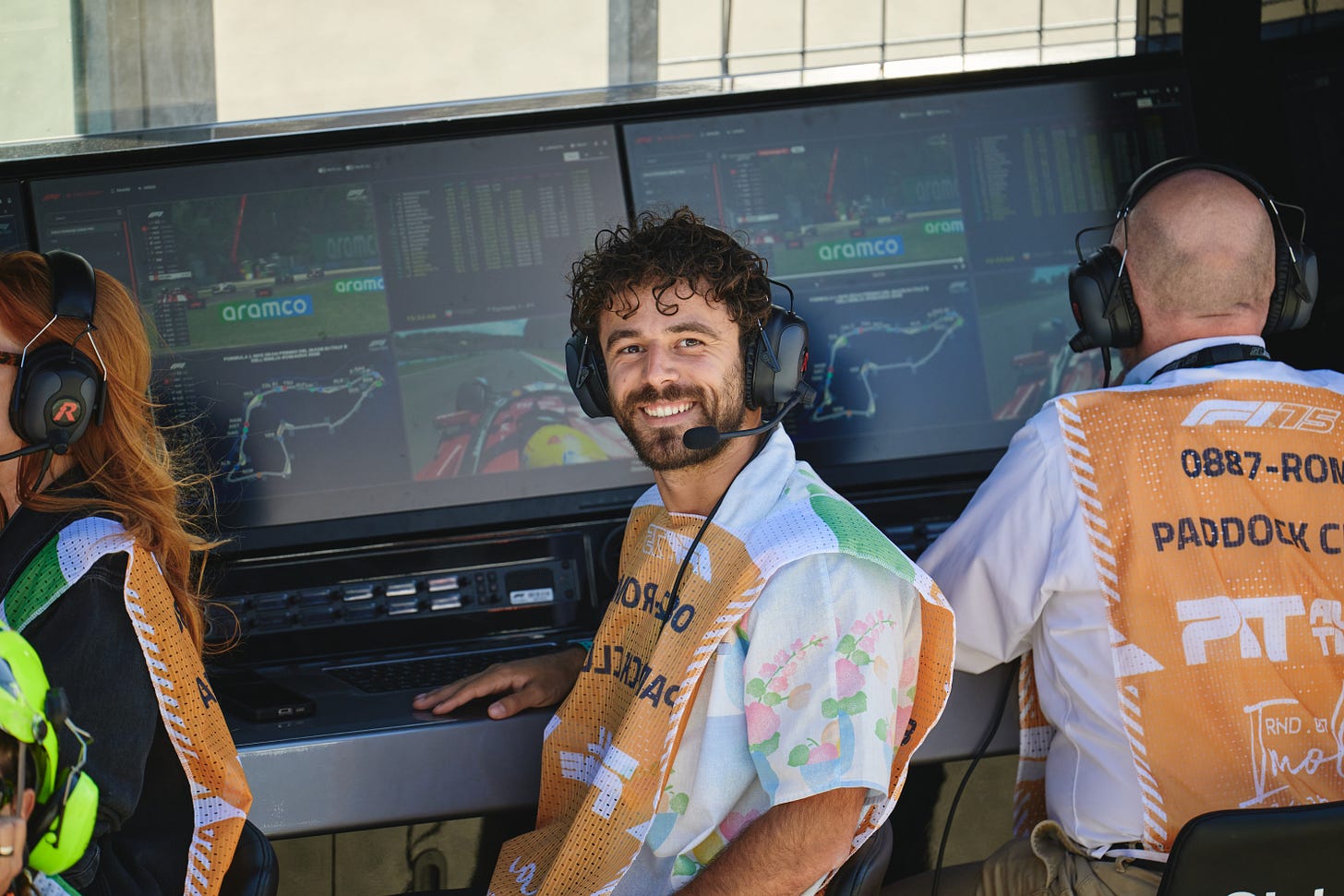
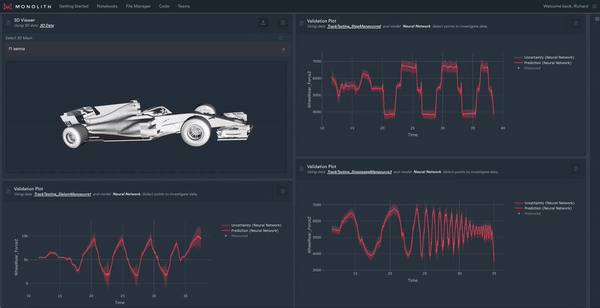
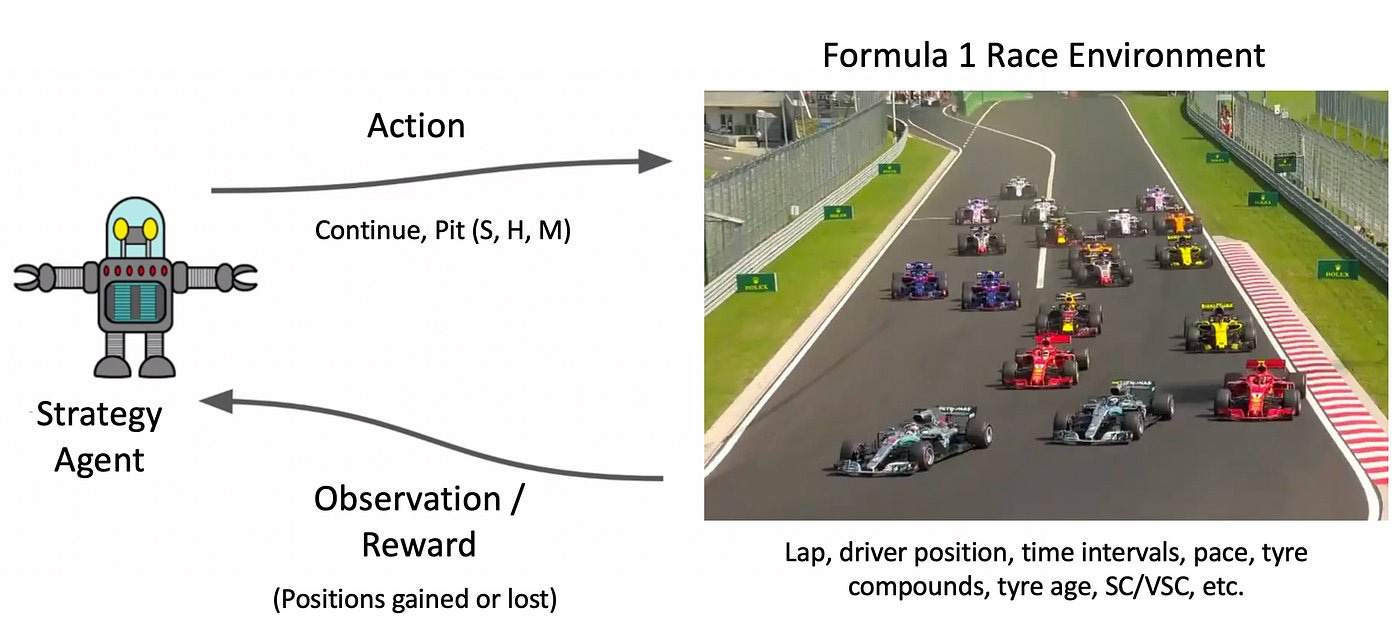
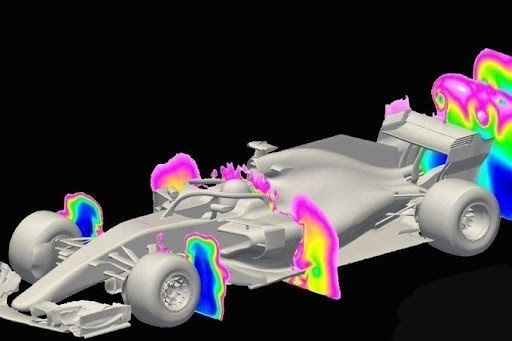
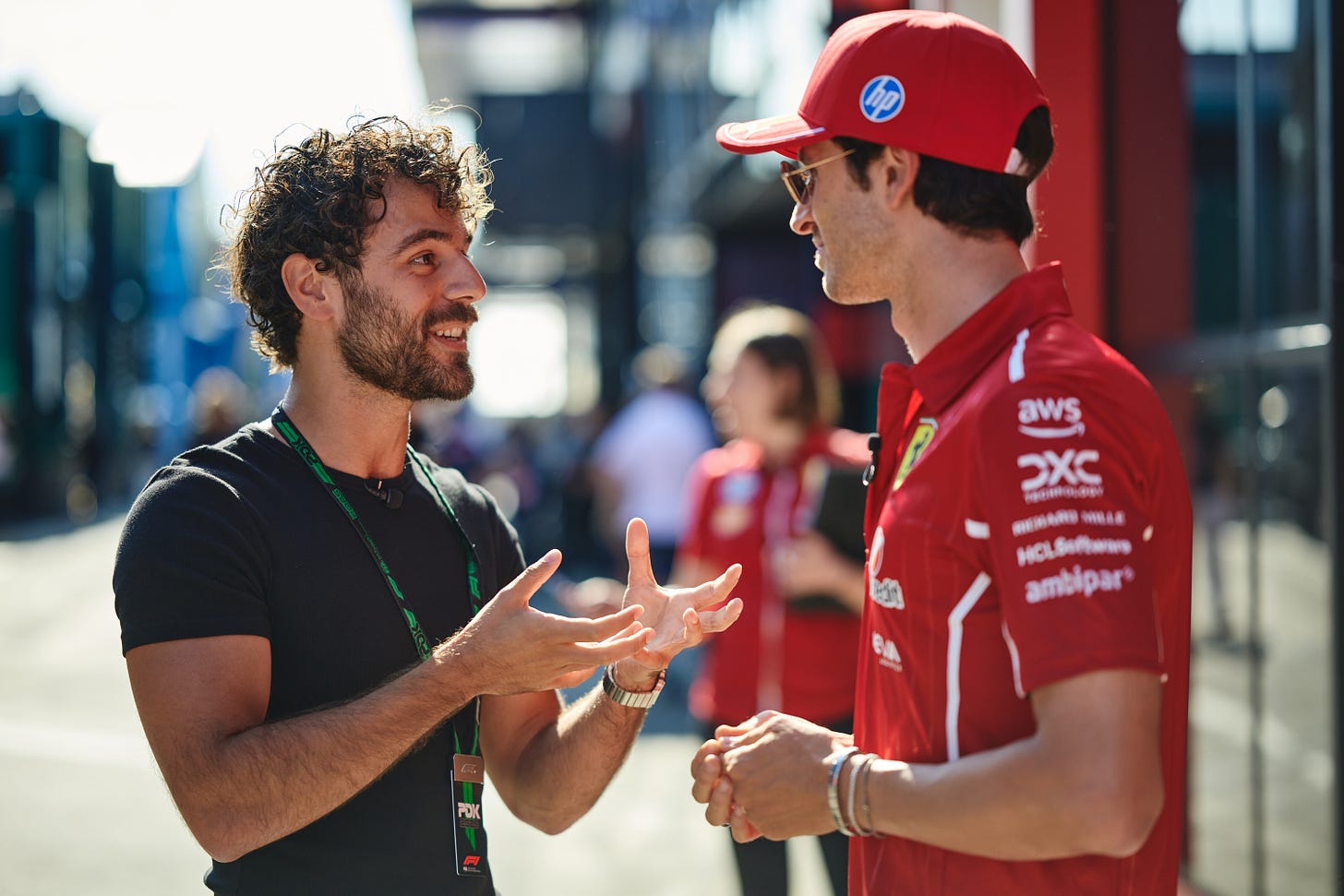
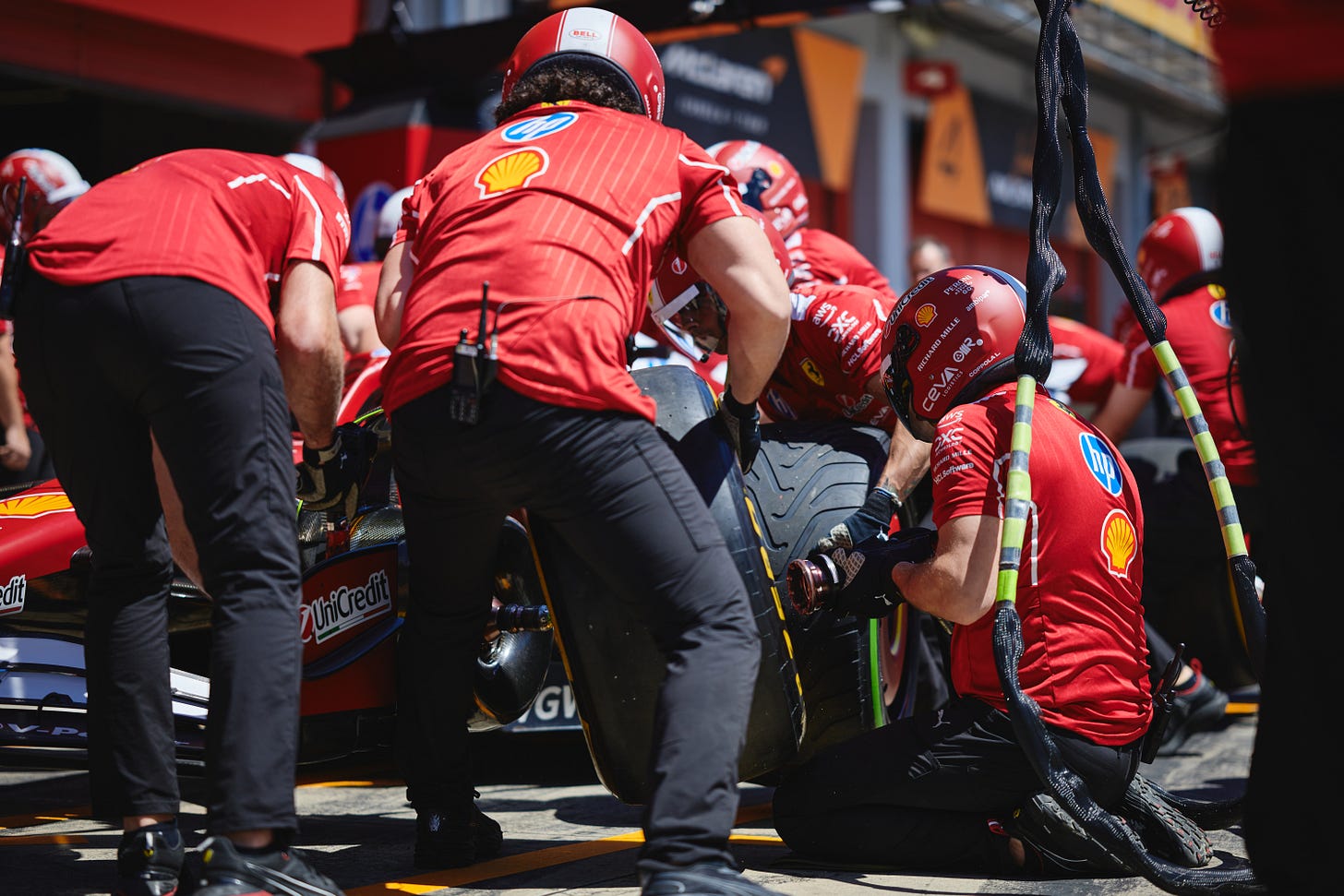
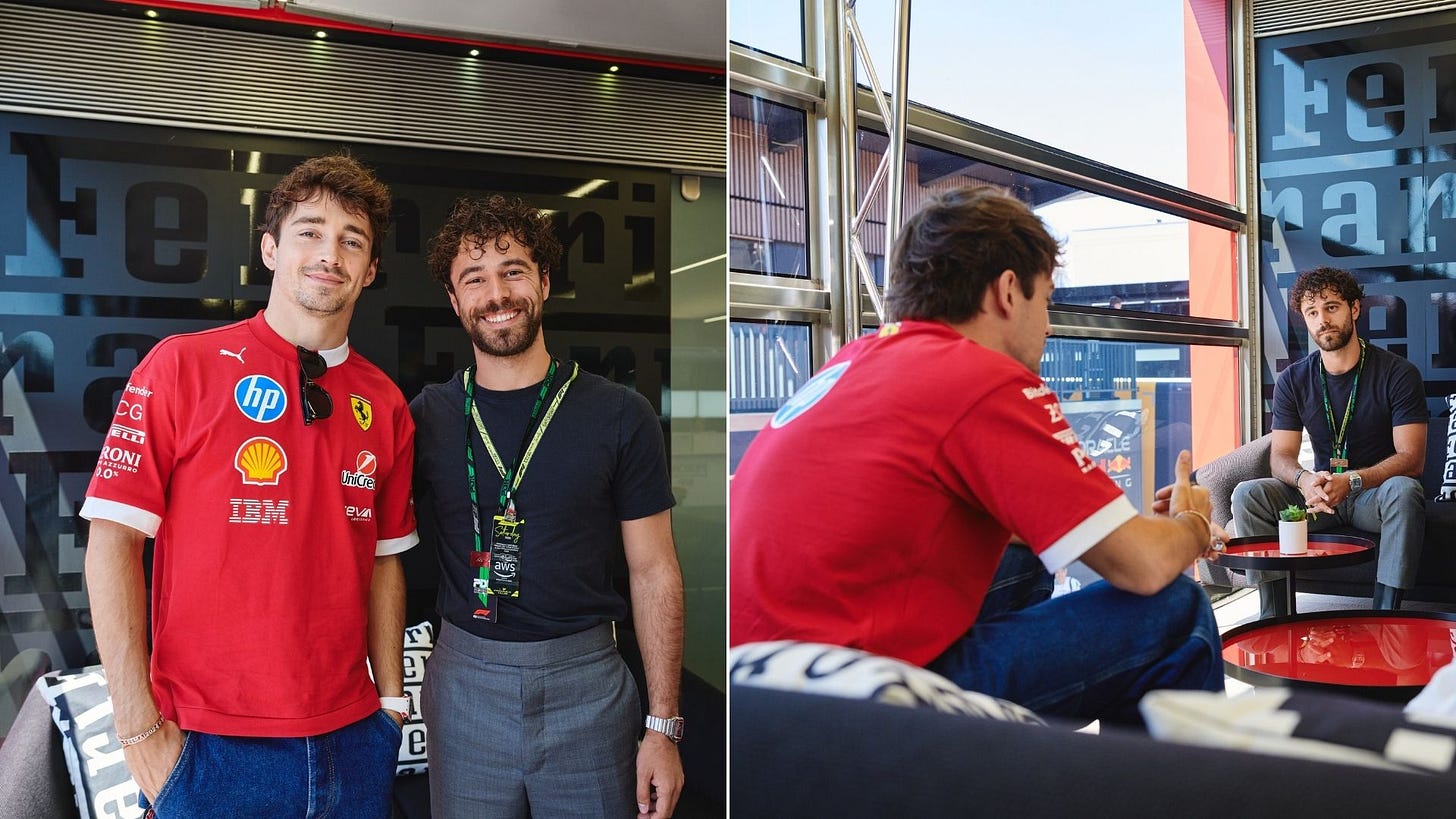
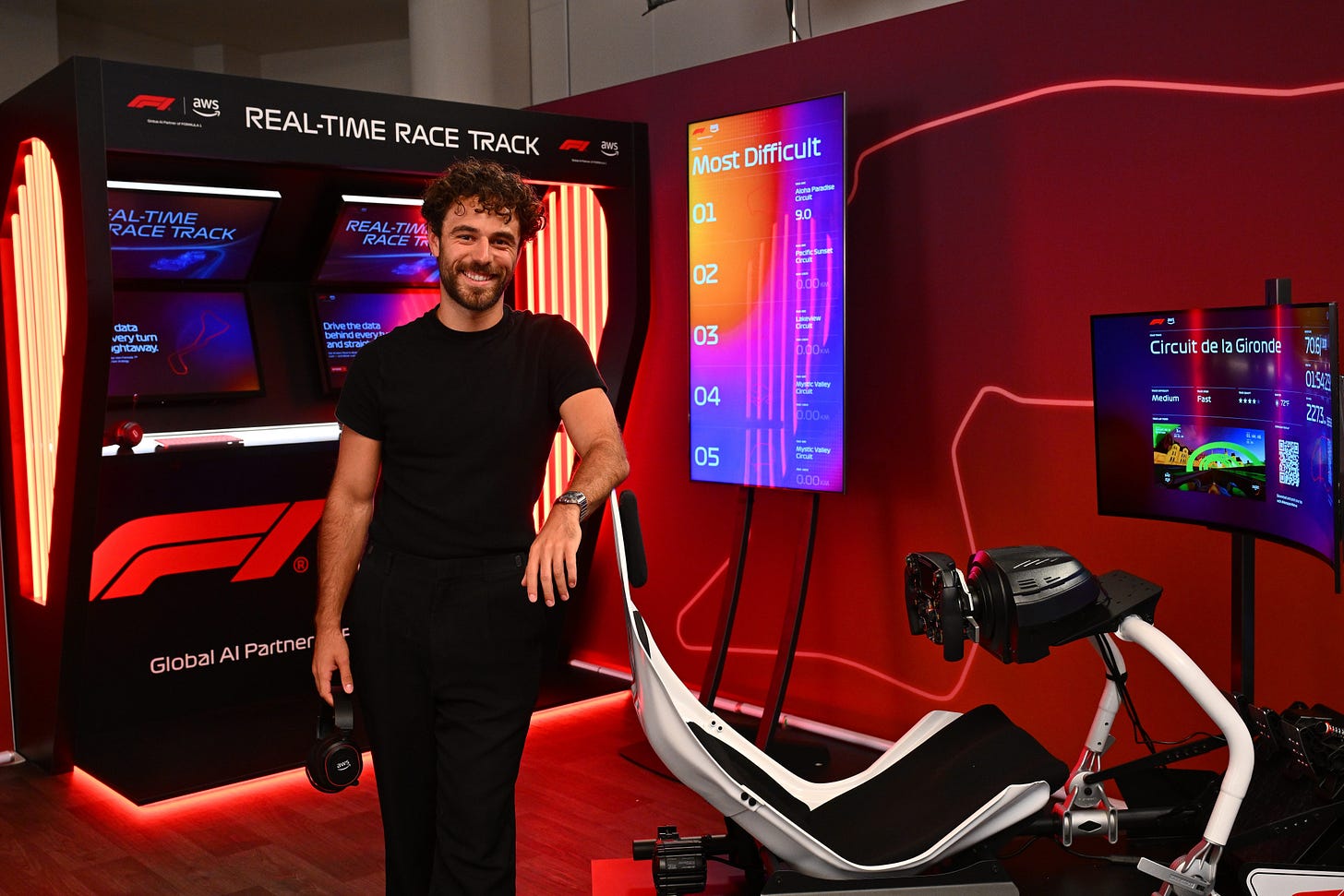
Great article. Well written. Thank you.
His neck is stronger than my bloodline. 🤣